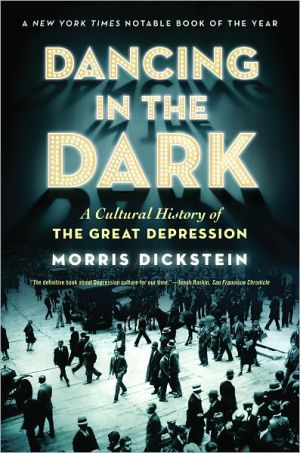

 |

|

The average rating for Dancing in the Dark: A Cultural History of the Great Depression based on 2 reviews is 3 stars.
Review # 1 was written on 2009-10-03 00:00:00 David Arnold David ArnoldDickstein comes up with some very insightful commentary and criticism of popular culture in the 1930s... but how the hell does one write a book subtitled "A Cultural History of the Great Depression" and completely miss The Carter Family, the Grand Ole Opry, etc? The subtitle should be "An Elitist New York Urbanite's Cultural History of the Great Depression." Beyond his blatant cherry-picking of material to suit his simplistic thesis, Dickstein tends to over-analyze his subject material and overstate the connections between social and political events and specific artistic trends- and between those artistic trends themselves (the mass marketing of Art Deco products parallels the popularity of swing music? Really? You goin' with that?). Literary critics should stick to literary criticism and leave the history to historians- well, at least this literary critic should. |
Review # 2 was written on 2010-06-28 00:00:00 Elizabeth Walters Elizabeth WaltersI had always been interested in the 1930s in American history, particularly in its cultural manifestations in literature, film, and music. When I saw a favorable review in The New York Review of Books of Morris Dickstein's Dancing in the Dark: A Cultural History of the Great Depression, I resolved to pick it up as soon as I could. There is an overall impression that the Depression was all I Was a Fugitive from a Chain Gang, but as Dickstein points out, there are numerous forces in play. For example, how is it that the worst economic crisis in our country's history saw the Screwball Comedies from Hollywood, films such as Easy Living, Bringing Up Baby, and The Philadelphia Story. It also saw the great films of John Ford, which ran the gamut from The Grapes of Wrath to Stagecoach. Then there was the music -- not only Woody Guthrie and "Brother Can You Spare a Dime," but also Porgy and Bess, the music of Duke Ellington, and Aaron Copland. In the end, I think that Dickstein did a good job with a very large subject. At first, I didn't know where he was going with the arrangement of his chapters (and I still have some misgivings about some of his choices, but not major ones). Then, on the second last page, it all came together for me:Radio, movies, and popular music left few people out, especially with the tremendous advances in rural electrification, one of the New Deal's more far-reaching programs. The high arts, once the preserve of the white, Anglo-Saxon, Protestant majority, began to embrace a crazy quilt of ethnic, religious, and regional populations. As Alfred Kazin wrote in Starting Out in the Thirties, "the banked-up experience of the plebes, of Jews, Irishmen, Negroes, Armenians, Italians, was coming into American books." And not just books, but mass culture as well. The energies of such outsiders, especially blacks and Jews, propelled popular music to the center of the new hybrid culture, while immigrant Jews and their children confected a Hollywood version of the American Dream. Moviegoing then was nothing if not a collective activity, a genuine mass act.That, of course, is it. As a Hungarian-American, I have never felt any particular identification with the Anglo-Saxon roots of American culture. Beginning in the 1930s, however -- just around the time my own parents came to America -- I have felt more like a participant in American culture, rather than a mere observer. |
CAN'T FIND WHAT YOU'RE LOOKING FOR? CLICK HERE!!!